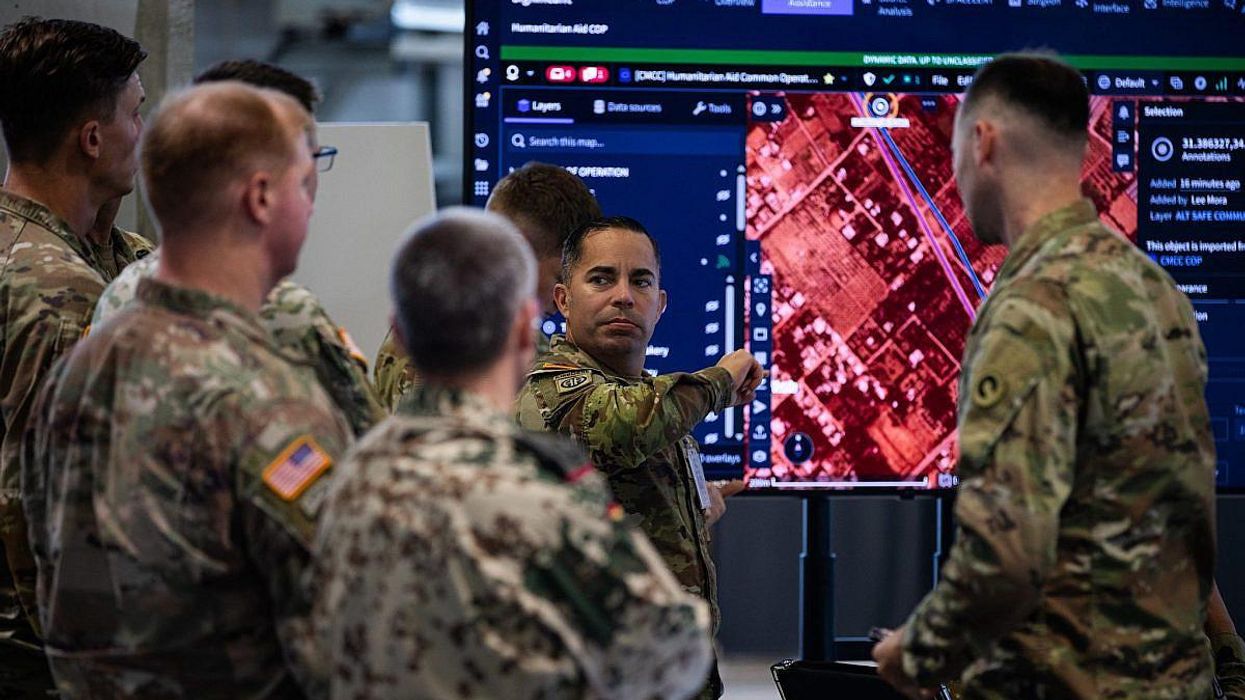News reports are breaking once again that North Korea stole hundreds of millions of dollars last year through cyberattacks to fund its growing nuclear weapons and missile programs — at the same time, keep in mind, the DPRK suffered through its worst economic crisis ever brought on due to a self-imposed blockade in response to the coronavirus.
While the headlines might seem disturbing on the surface, North Korea, even during a time of a global pandemic, has remained remarkably consistent in its approach to guaranteeing its own national security: nuclear weapons ensure the United States will never invoke regime change, and Pyongyang will pay any price to ensure that atomic insurance policy never lapses.
Of course, these days headlines on anything involving North Korea are rare — and for a very specific reason. When North Korea promised then-President Donald Trump and Secretary Mike Pompeo back in 2018 it would refrain from long-range missile and nuclear weapons tests, the interest in the so-called hermit kingdom faded. For it was pictures and video going viral on social media of ICBMs flying through the sky — something Trump said would not happen — that drove the United States and North Korea onto a path of confrontation back in 2017. It had many thinking in Washington that nuclear war might be in the offing.
With a lack of weapons tests to drive news, combined with a historic political crisis back home and coronavirus rampaging in nearly every corner of the globe, it seems clear North Korea has become a national security news orphan.
Unfortunately, we should not mistake Kim’s no-testing pledge — something he has revoked now on several occasions — for a freeze on building out his atomic and missile arsenals. Over the last few months, North Korea has shown off multiple new missile platforms that prove that, just because missiles aren’t being tested in the field, Kim’s labs haven’t been busy. Pyongyang is signaling over and over again that its nuclear deterrent will continue to get stronger unless some sort of deal can be reached with Washington. The longer that takes, the bigger the nuclear insurance policy Kim takes out.
Here is where things get dangerous for the new Biden administration. Outside of public relations-styled op-eds and over-the-top campaign rhetoric calling Kim Jong Un a “thug,” clearly the new team in Washington is lacking in interest when it comes to the DPRK. Instead of trying to pick up where Trump left off, something that could have been easily done by affirming the Singapore Declaration and committing to some sort of dialogue with Pyongyang, during the transition, North Korea has thus far been altogether ignored by the administration. And while it has committed to a lengthy policy review on the subject, that review seems centered on, as Secretary Blinken noted himself, “increasing pressure on North Korea to come to the negotiating table.”
History tells us that is where the détente of the last few years slowly breaks down. I expect the Biden administration to settle for a repackaged Obama-style “strategic patience” policy on North Korea. Biden will offer dialogue and minor sanctions relief — but in exchange for a big North Korean nuclear concession up front. There will be an effort to enforce sanctions on the books more rigorously and perhaps add new sanctions, but none of these actions will ever get Pyongyang to give up a single nuclear weapon. North Korea’s economic dependence on China means it is up to Beijing to enforce such sanctions — a laughable strategy in an era of growing U.S.-China confrontation.
All of this means only one thing: North Korea will match perceived pressure with pressure. The Kim regime will likely lash out, testing bigger and more advanced missiles as the months pass by. Heading into the summer, I would expect Kim to test his new so-called “monster missile,” the Hwasong-16. Tests of submarine launched missiles will come before or after. North Korea could even go back to nuclear testing, potentially making threats to conduct an above ground test, as it did at the height of the crisis in 2017.
And yet, none of this has to come to pass if the Biden administration would come to the realization that North Korea will never give up its nuclear weapons, and instead seek to contain Pyongyang’s capabilities, limit the size of its program, and ensure it can’t sell its nuclear or missile technology to the highest bidder. Biden would never have to admit that he was giving up on denuclearization; he could, however, explain that a phased approach with achievable benchmarks for both sides is best for everyone. If Biden were, for example, to offer North Korea sanctions relief on coal exports, worth billions of dollars to Pyongyang, in return for the closure of the Yongbyon nuclear facility, Biden might be surprised by the response.
Sadly, I have very little to no expectation of any breakthroughs on North Korea — only a self-created crisis that team Biden is encouraging by refusing to apply practical steps to limit a growing national security threat. Ignoring the North Korean nuclear threat only guarantees it will get worse with each passing day, something President Biden should already know.
















